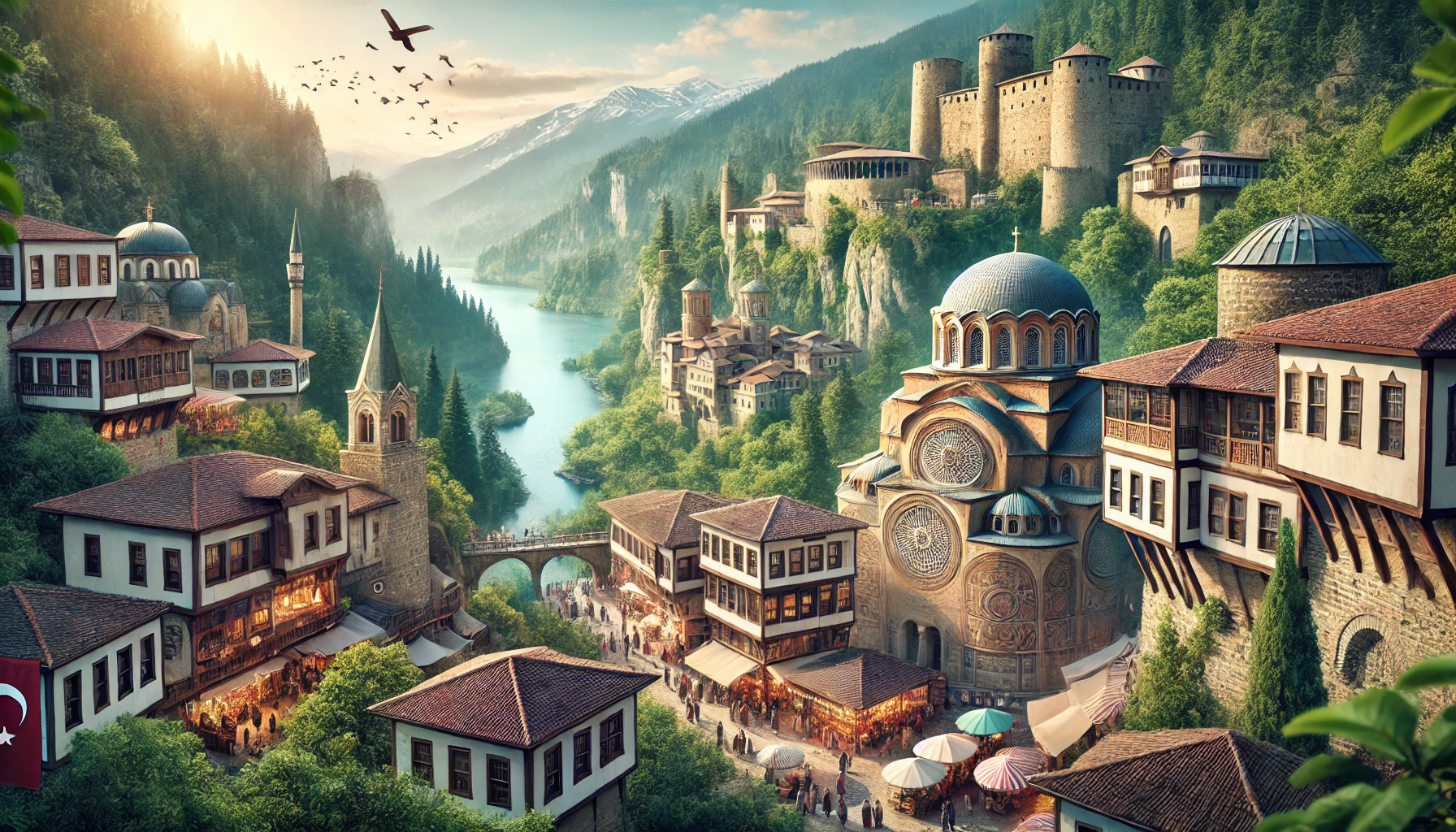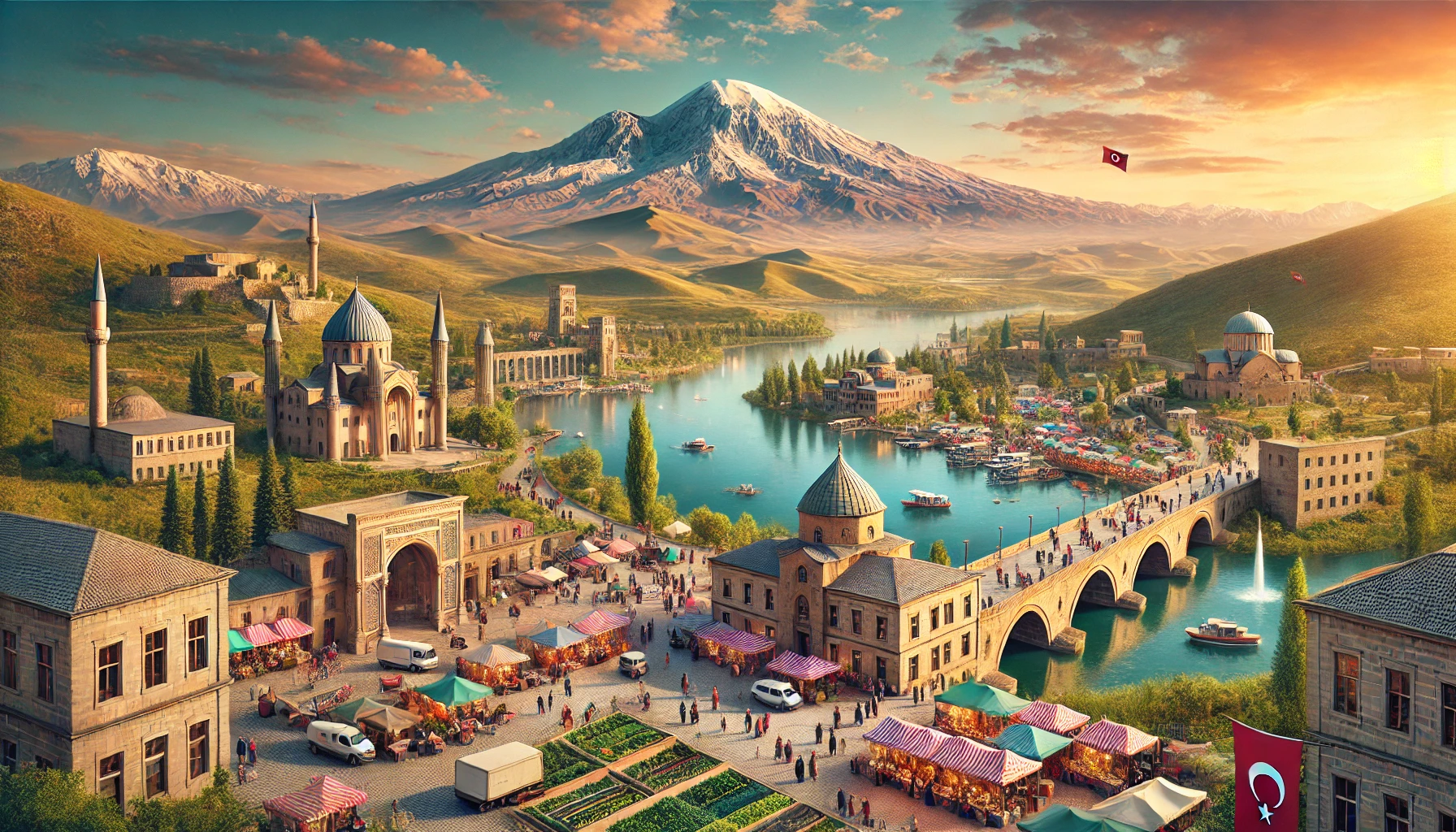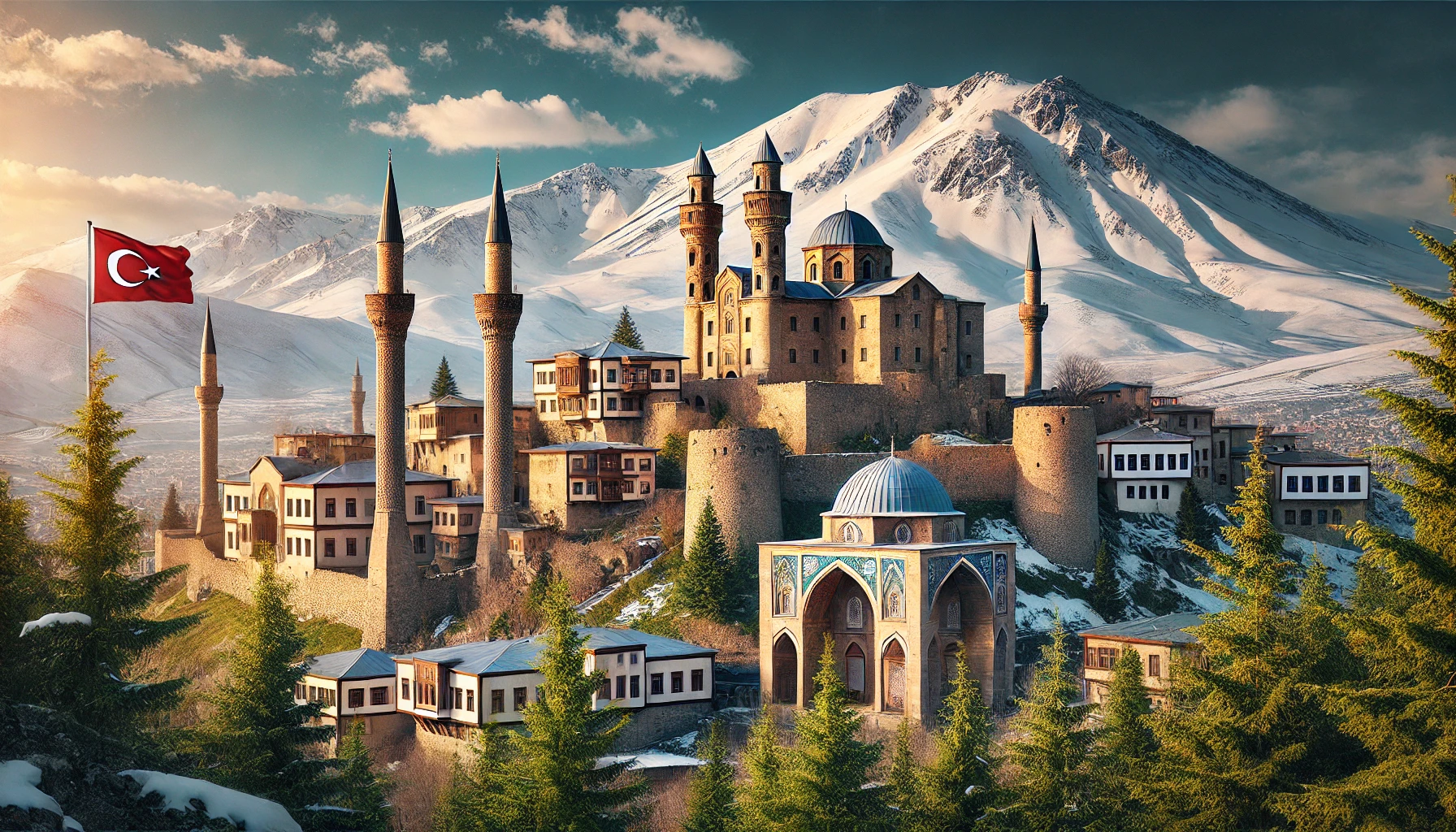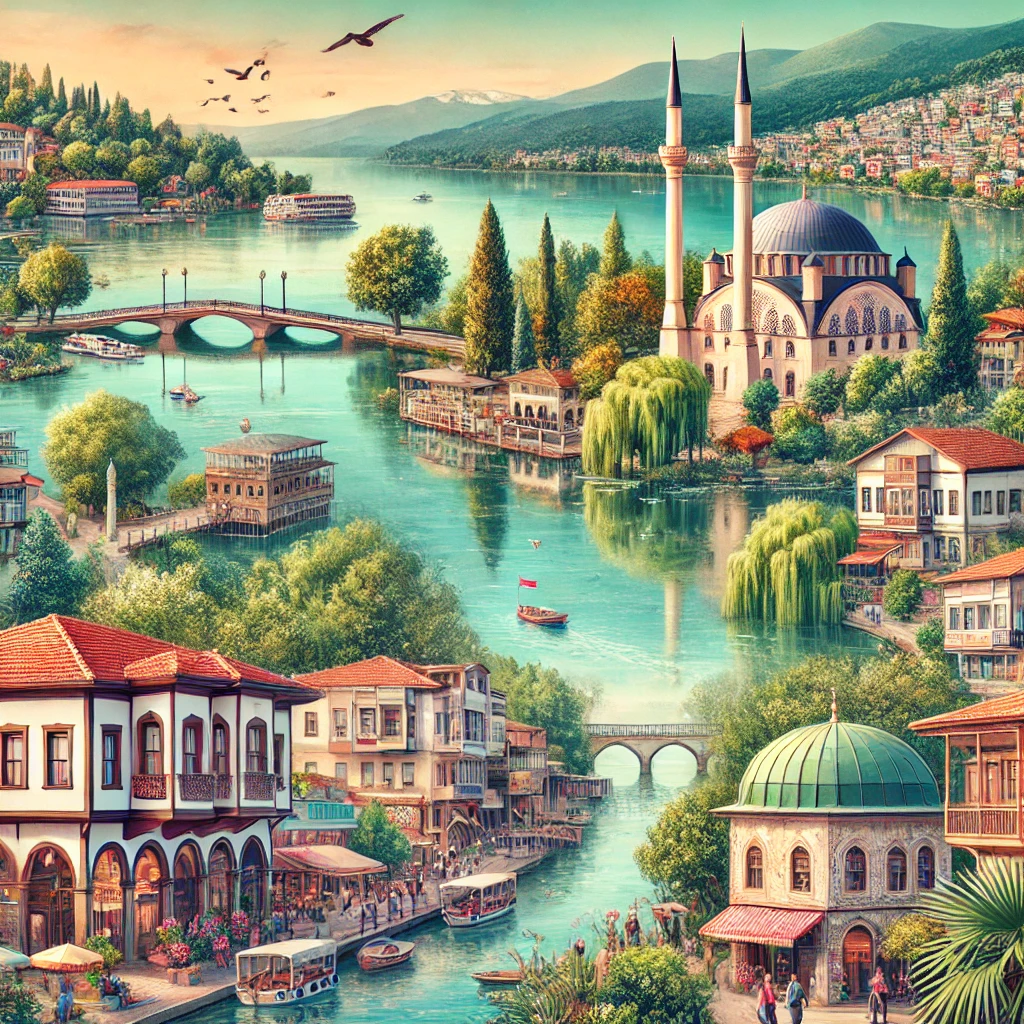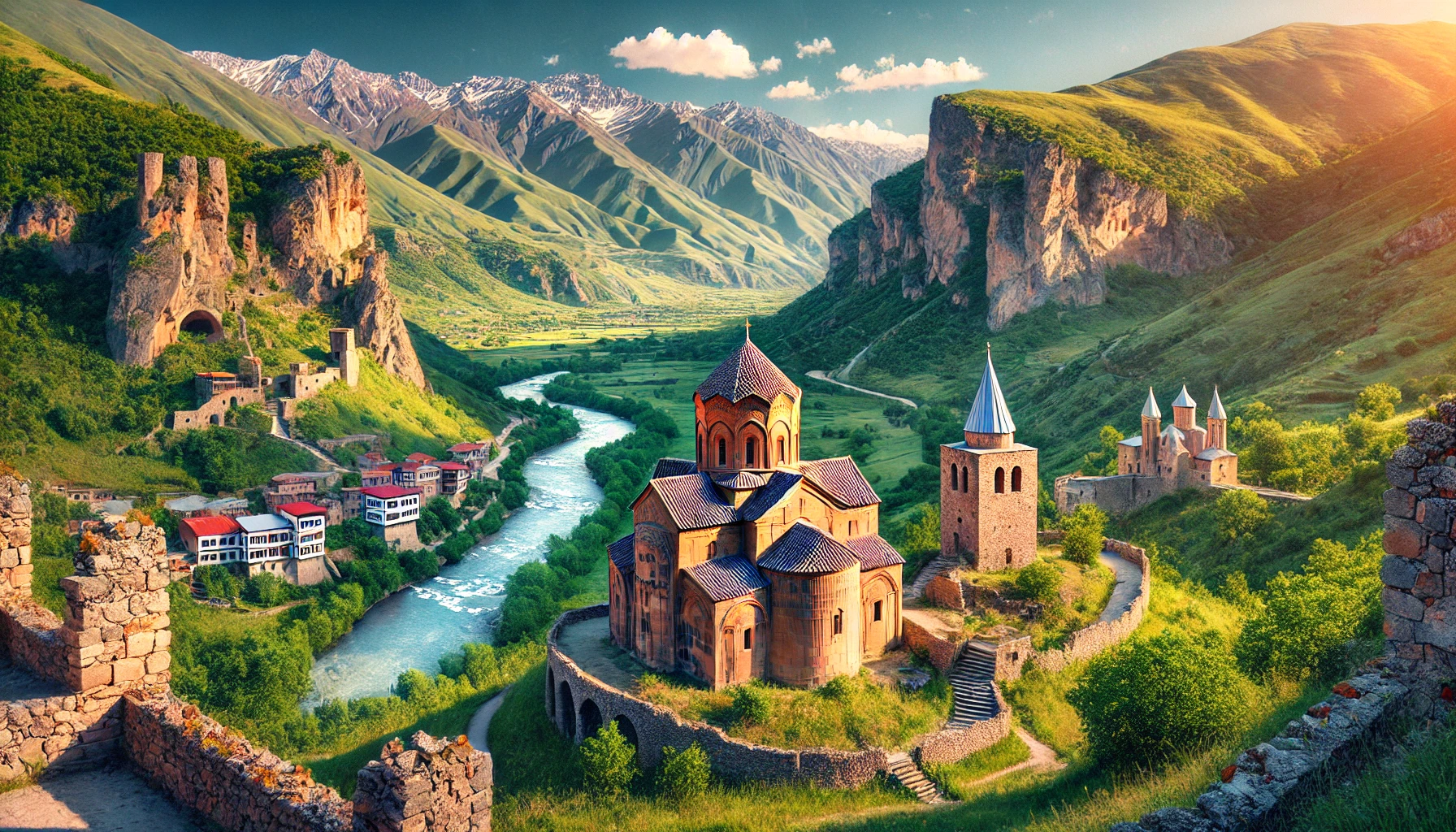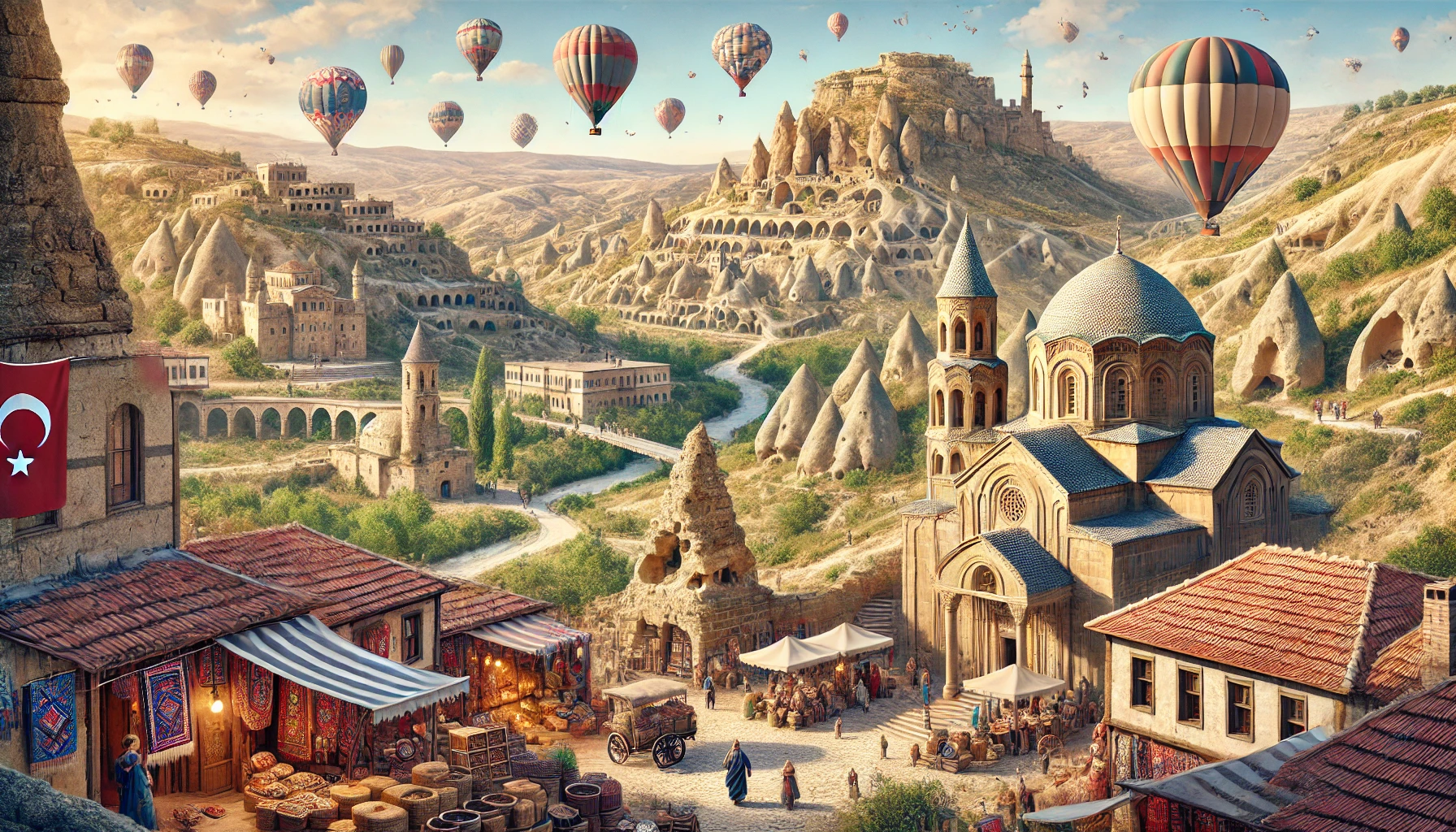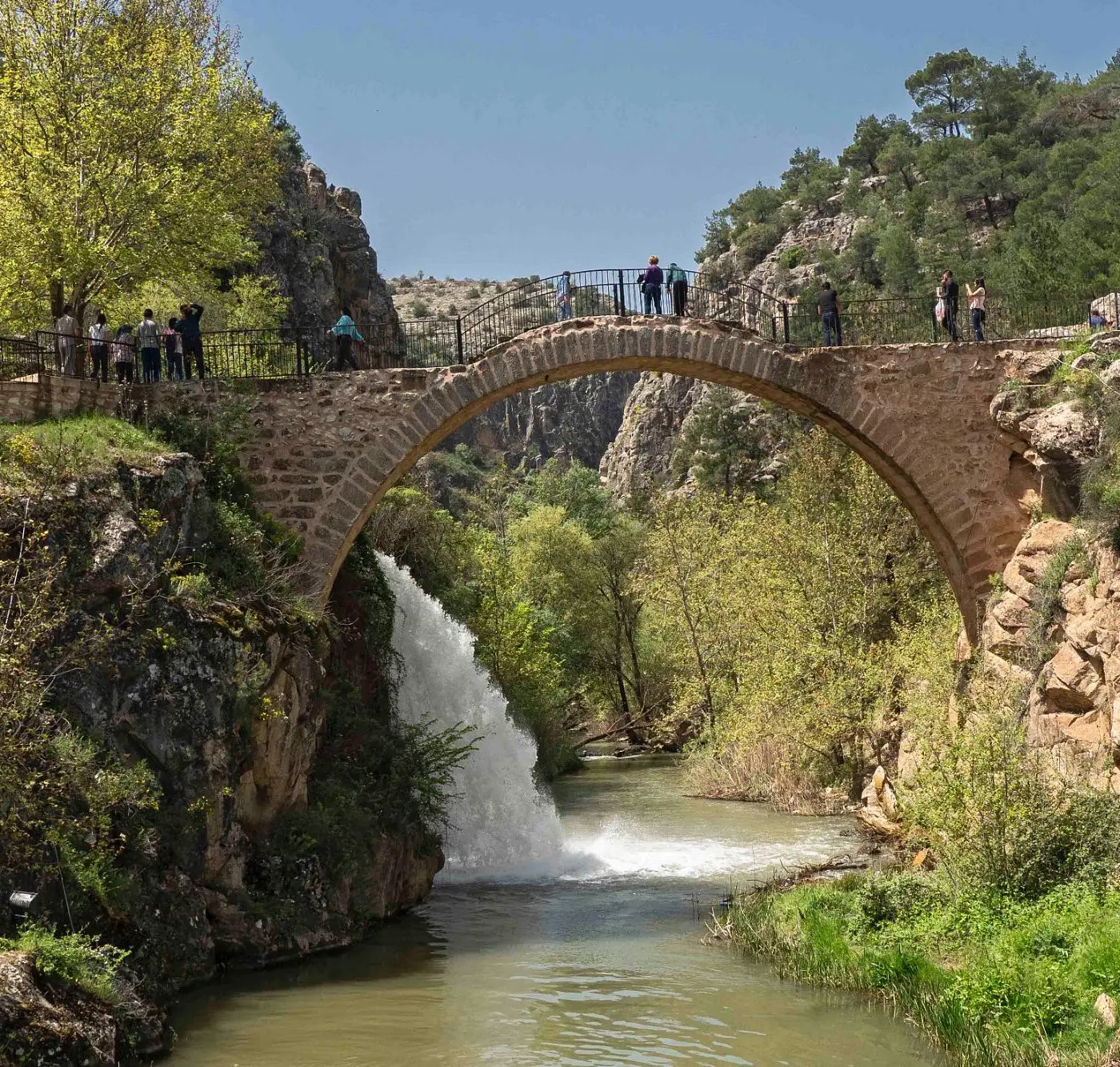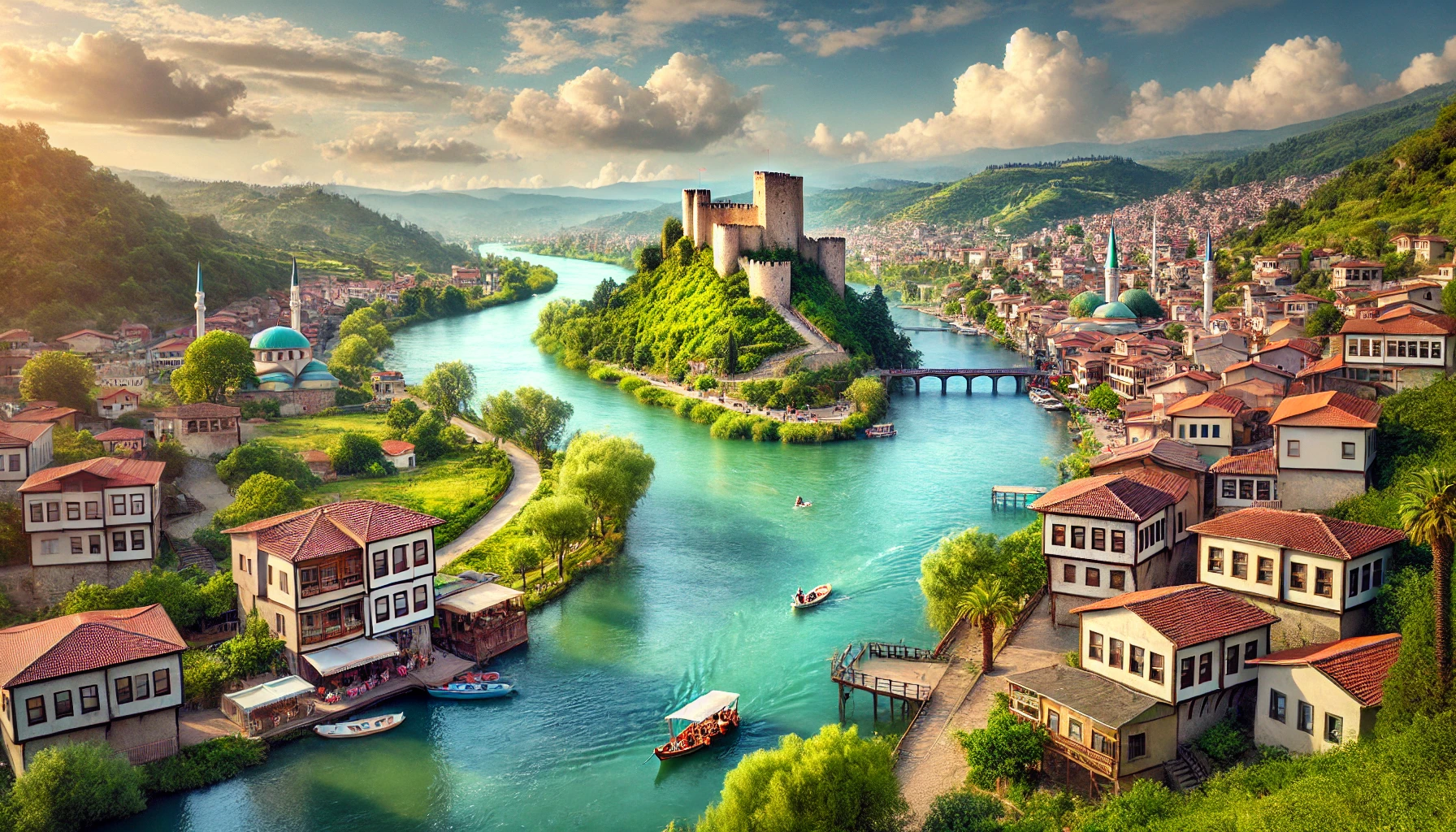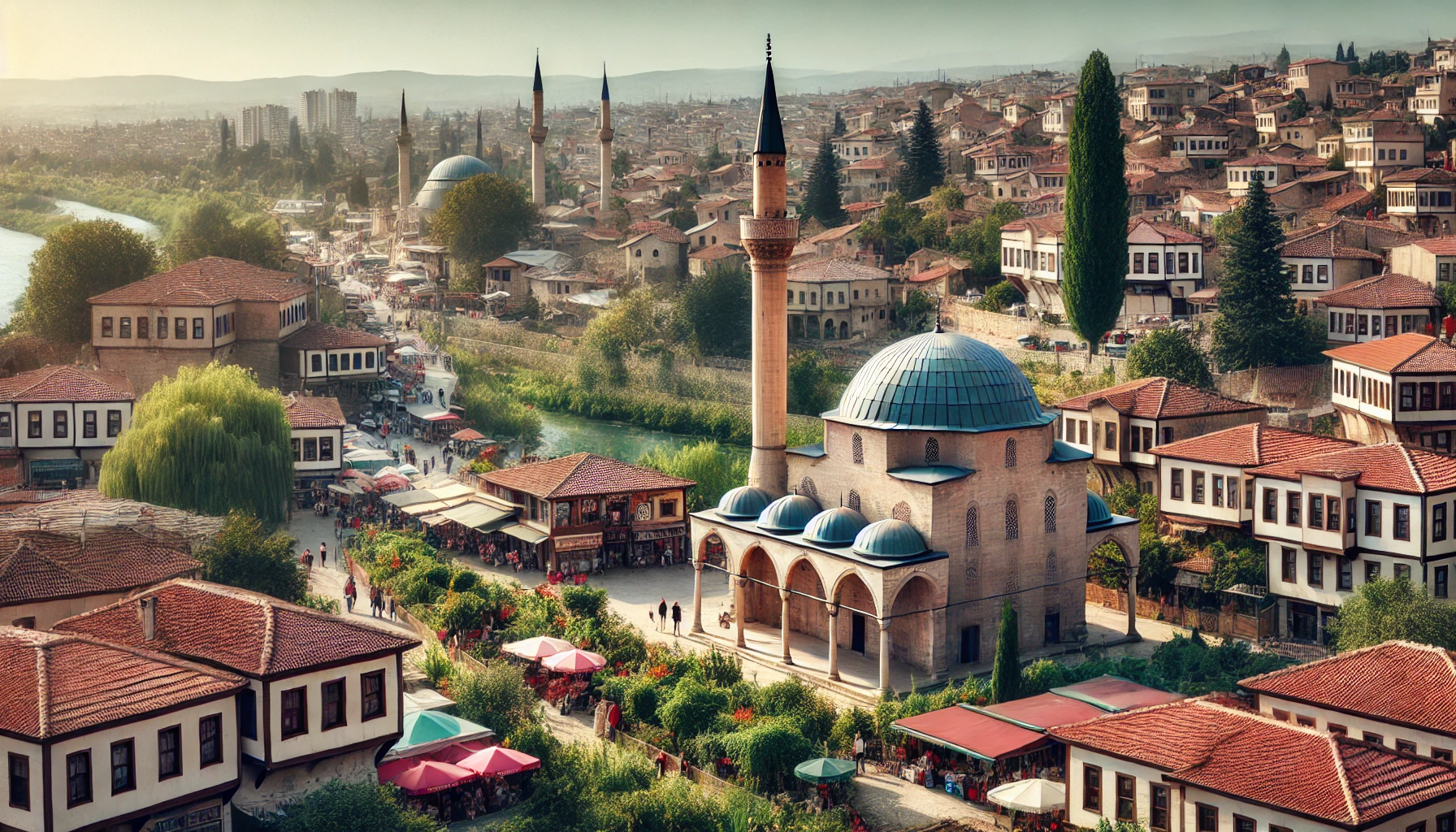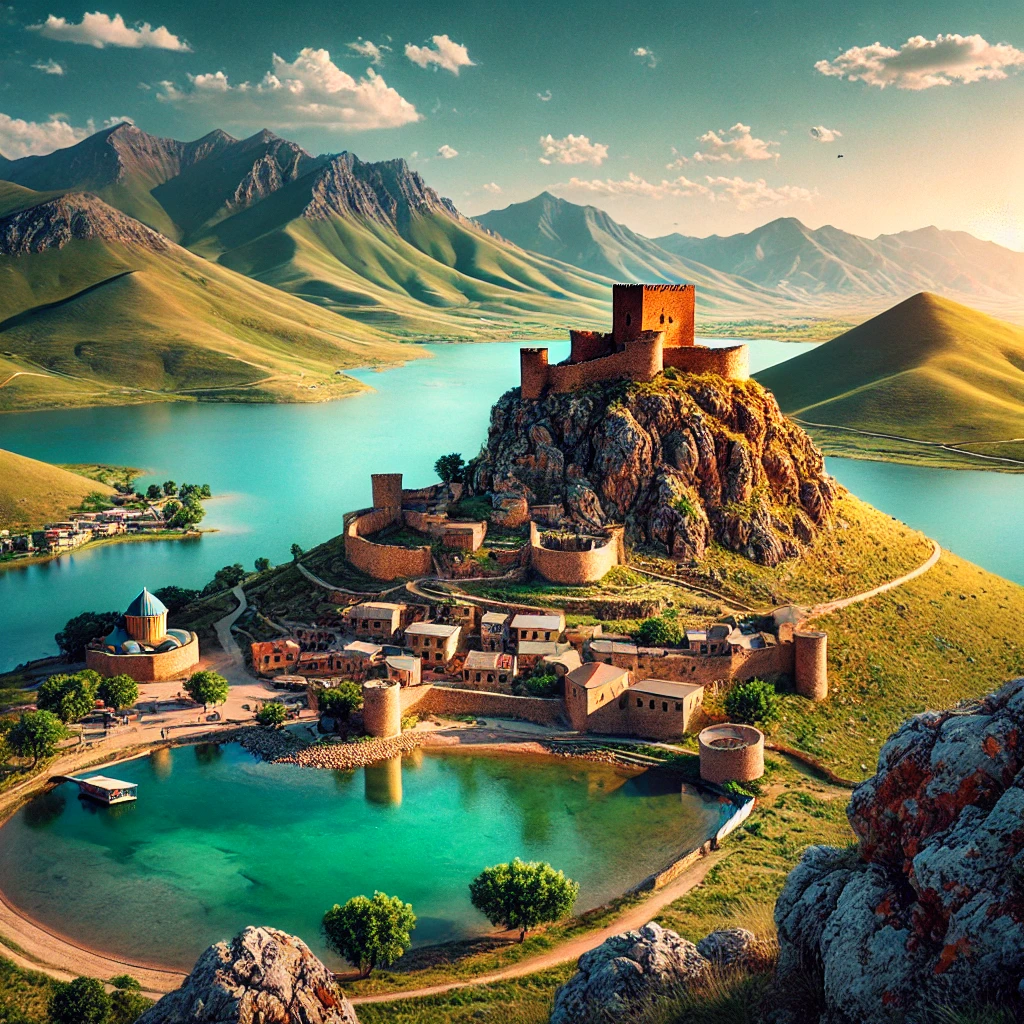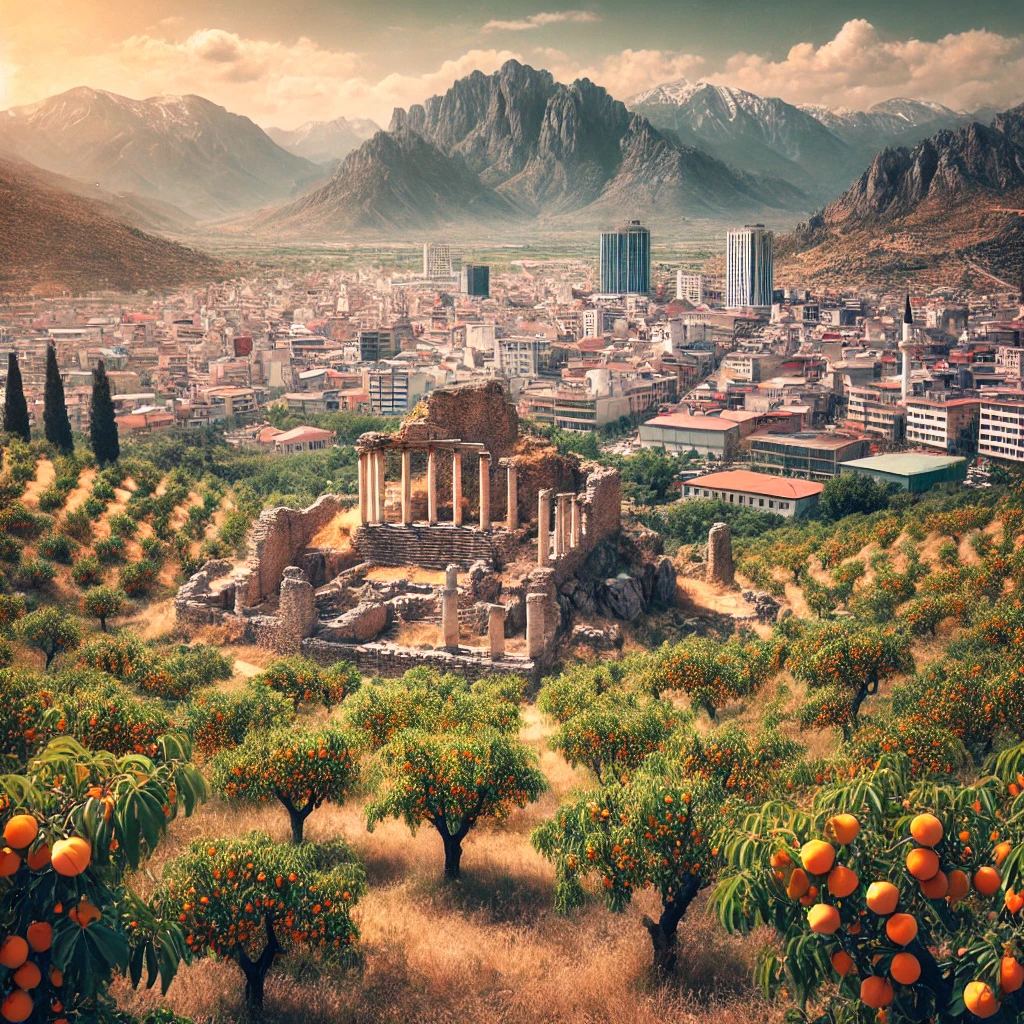Exploring Çatalhöyük: A Journey Through One of the World’s Oldest Human Settlements
Çatalhöyük, located in the Çumra district of Konya, Turkey, is one of the most significant archaeological sites in the world. Founded approximately 9,000 years ago, Çatalhöyük offers a fascinating glimpse into early human civilization. Recognized by UNESCO as a World Heritage Site, this ancient settlement provides invaluable insights into the lifestyles, culture, and art of some of the first agricultural societies. In this article, we will explore the history, significance, and key attractions of Çatalhöyük, making it a must-visit destination for travel enthusiasts and history buffs alike.
The Historical Significance of Çatalhöyük
One of the Earliest Human Settlements
Çatalhöyük is one of the earliest known human settlements, dating back to the Neolithic period. The site consists of two mounds, one to the east and one to the west, which were continuously inhabited for approximately 2,000 years. This prolonged habitation makes Çatalhöyük a crucial site for understanding the development of early human societies.
A Cradle of Agriculture
The inhabitants of Çatalhöyük are among the first known agricultural communities. They cultivated crops, domesticated animals, and developed complex tools and techniques for farming. This shift from a nomadic lifestyle to settled farming communities marks a significant turning point in human history.
Cultural and Artistic Achievements
Çatalhöyük is renowned for its sophisticated culture and art. The site features intricate murals, figurines, and decorative artifacts that reflect the rich cultural and artistic expressions of its inhabitants. These artistic achievements provide a window into the spiritual and social life of the community.
Exploring the Archaeological Site
The East and West Mounds
The site of Çatalhöyük consists of two primary mounds: the East Mound and the West Mound. The East Mound, the older of the two, dates back to around 7,400 BCE and was inhabited for approximately 1,400 years. The West Mound, which dates back to around 6,200 BCE, represents the later phase of settlement.
The East Mound
The East Mound contains the oldest layers of the settlement, where archaeologists have uncovered a wealth of artifacts and structures. Visitors can explore the well-preserved remains of houses, which were densely packed and accessed via ladders from the roofs. This unique architectural style reflects the close-knit nature of the community.
The West Mound
The West Mound, though not as extensively excavated as the East Mound, offers insights into the later phases of the settlement. The artifacts and structures found here indicate a continuation of the cultural and social practices developed during the earlier period.
The Houses of Çatalhöyük
One of the most fascinating aspects of Çatalhöyük is its distinctive housing. The houses were built closely together with no streets separating them, and entry was typically through the roof. This layout suggests a highly communal lifestyle, with shared spaces for various activities.
Interior Layout
The interior of the houses often featured plastered walls and floors, with platforms used for sleeping, working, and storage. Many houses also contained hearths and ovens, indicating the central role of cooking and communal meals in daily life.
Wall Paintings and Murals
The walls of many houses were decorated with vibrant paintings and murals. These artworks depict a variety of scenes, including hunting, religious rituals, and symbolic motifs. The murals provide valuable insights into the beliefs, practices, and daily life of the inhabitants.
Religious and Funerary Practices
Çatalhöyük is notable for its complex religious and funerary practices. The inhabitants practiced intramural burial, with the deceased often buried beneath the floors of their homes. This practice suggests a strong connection between the living and the dead, as well as a belief in an afterlife.
Figurines and Symbols
Numerous figurines and symbolic artifacts have been discovered at Çatalhöyük, many of which are believed to have religious or spiritual significance. These include representations of animals, deities, and abstract symbols, reflecting the community’s rich spiritual life.
The Archaeological Discoveries
Excavation History
The first excavations at Çatalhöyük were conducted by British archaeologist James Mellaart in the 1960s. His groundbreaking work uncovered significant portions of the East Mound and brought international attention to the site. Since then, numerous archaeological teams have continued to excavate and study Çatalhöyük, uncovering new discoveries and advancing our understanding of this ancient settlement.
Significant Findings
Over the years, archaeologists have uncovered a wealth of artifacts and structures at Çatalhöyük. Some of the most significant findings include:
- Murals and Wall Paintings: The vibrant murals and wall paintings found in many houses provide valuable insights into the artistic and cultural expressions of the inhabitants.
- Figurines and Sculptures: A variety of figurines and sculptures, often depicting animals and deities, reflect the religious beliefs and practices of the community.
- Tools and Implements: The discovery of various tools and implements sheds light on the daily activities and technological advancements of the inhabitants.
- Burials and Grave Goods: The burial practices and grave goods found at the site offer insights into the community’s beliefs about death and the afterlife.
Visiting Çatalhöyük
How to Get There
Çatalhöyük is located near the town of Çumra in Konya Province, Turkey. The site is approximately 60 kilometers southeast of the city of Konya, which is accessible by air, train, and bus.
By Air
The nearest airport to Çatalhöyük is Konya Airport, which has regular flights from major cities in Turkey, including Istanbul and Ankara. From the airport, visitors can hire a car or take a taxi to reach the archaeological site.
By Train
Konya is well-connected by train, with high-speed rail services from Istanbul, Ankara, and other major cities. From Konya, visitors can take a bus or taxi to Çatalhöyük.
By Bus
Regular bus services operate between Konya and Çumra, providing a convenient option for reaching the site. From Çumra, visitors can hire a taxi or use local transportation to reach Çatalhöyük.
Best Time to Visit
The best time to visit Çatalhöyük is during the spring (April to June) and autumn (September to November) when the weather is mild and pleasant. These seasons offer comfortable conditions for exploring the archaeological site and the surrounding area.
Visitor Facilities
The Çatalhöyük Visitor Center provides a wealth of information about the site, its history, and its significance. The center features exhibits, displays, and interactive presentations that enhance the visitor experience.
Guided Tours
Guided tours are available at Çatalhöyük, offering visitors the opportunity to learn from knowledgeable guides who provide detailed insights into the site’s history, archaeology, and cultural significance.
Practical Tips
- Wear Comfortable Shoes: Exploring the site involves walking on uneven terrain, so comfortable footwear is essential.
- Stay Hydrated: Carry water, especially during the hot summer months, to stay hydrated while exploring.
- Respect the Site: Be mindful of the historical significance of the site and avoid touching or disturbing any artifacts or structures.
Why Çatalhöyük is a Must-Visit Destination
Historical Significance
Çatalhöyük offers a unique glimpse into one of the world’s earliest human settlements. The site’s rich history and archaeological significance make it a captivating destination for history enthusiasts and scholars.
Cultural and Artistic Insights
The vibrant murals, figurines, and artifacts discovered at Çatalhöyük provide valuable insights into the culture, art, and religious practices of early human societies. Visitors can appreciate the creativity and sophistication of the inhabitants.
Educational Experience
Visiting Çatalhöyük is an educational experience, offering visitors the opportunity to learn about the development of early agricultural societies and the evolution of human civilization. The site’s exhibits and guided tours enhance this learning experience.
Natural Beauty
The surrounding landscape of Çatalhöyük, with its rolling hills and fertile plains, adds to the site’s appeal. Visitors can enjoy the natural beauty of the area while exploring the ancient settlement.
Conclusion: Discovering the Wonders of Çatalhöyük
Çatalhöyük, with its rich history, cultural significance, and stunning archaeological discoveries, is a hidden gem in Turkey’s Konya Province. From exploring ancient ruins and learning about early human societies to appreciating the artistic and religious achievements of the inhabitants, Çatalhöyük offers a diverse range of experiences for travel enthusiasts. As you uncover the stories of this ancient settlement and its people, you’ll create lasting memories and a deeper appreciation for the origins of human civilization.
Latest Update: Jul 21, 2024
Your Content Goes Here
TAGS: ancient human settlements, Çatalhöyük, Çatalhöyük archaeology, Çatalhöyük history, Çatalhöyük travel guide, Çatalhöyük Turkey, early agriculture, Konya tourism, Neolithic settlement, Turkey historical sites, UNESCO World Heritage Site
A brief summary of the key points in this article.





